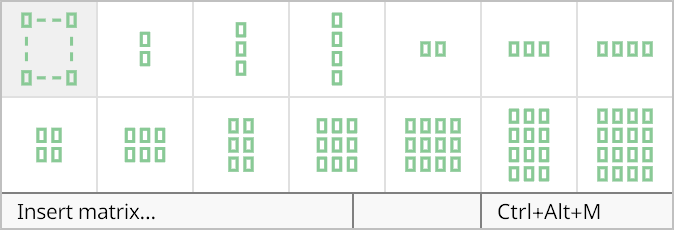Radical Pie |
At the top of the main editor window, Radical Pie displays 16 palettes that contain all sorts of mathematical symbols and the various structures that may appear in an equation. Clicking on a palette button brings up a menu containing its symbols and structures.
When the mouse hovers over a particular entry, three pieces of information about that entry are displayed in the bar at the bottom of the palette:
If you have the means of entering Unicode characters directly, either with a special keyboard or by entering hex values on the numeric keypad, then typing the character with the Unicode value associated with a palette entry directly in an equation has the same effect as selecting the entry from its palette.
Some palette entries, especially those in the Greek Letters palette, have keyboard shortcuts that begin with Ctrl+G, but also show another character following an arrow. This means that the symbol can be entered in an equation by first typing Ctrl+G and then typing the character appearing after the arrow.
This palette contains all of the Greek letters, including some obscure variants. Small Greek letters are inserted with an italic style, and capital Greek letters are inserted with an upright style. (You can toggle between these two styles by selecting a Greek character and typing Ctrl+G.)
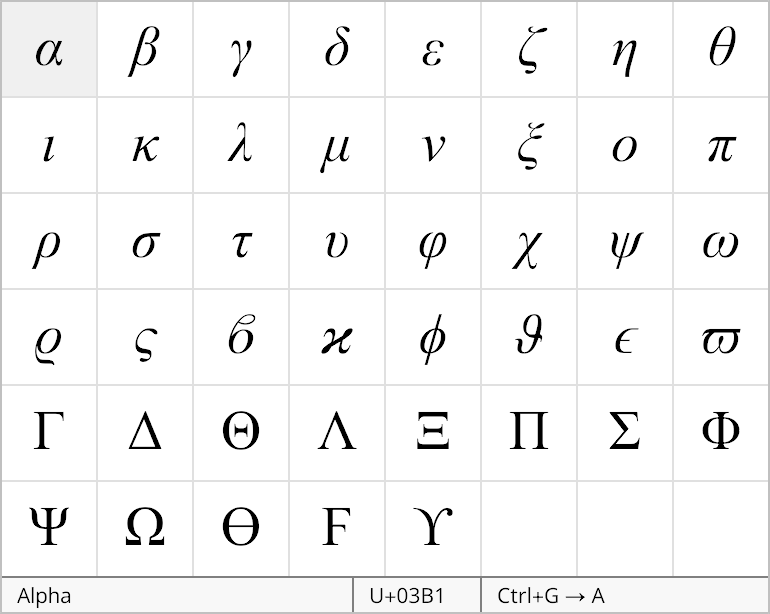
This palette contains a mishmash of symbols that don’t readily fit into other categories.

This palette contains symbols used in physics, chemistry, and astronomy.
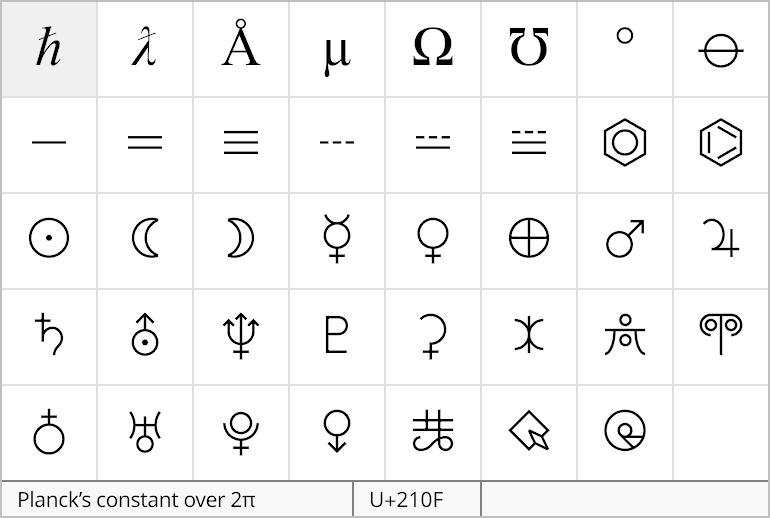
This palette contains various unary and binary operators.
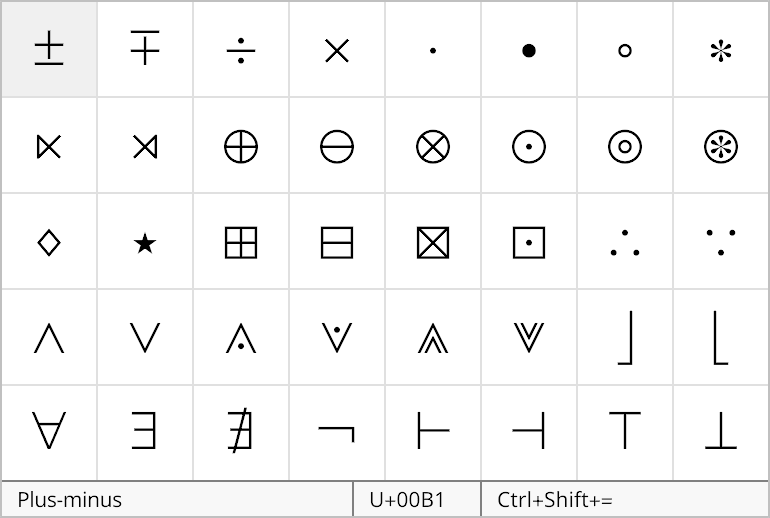
This palette contains various equality and inequality relations.
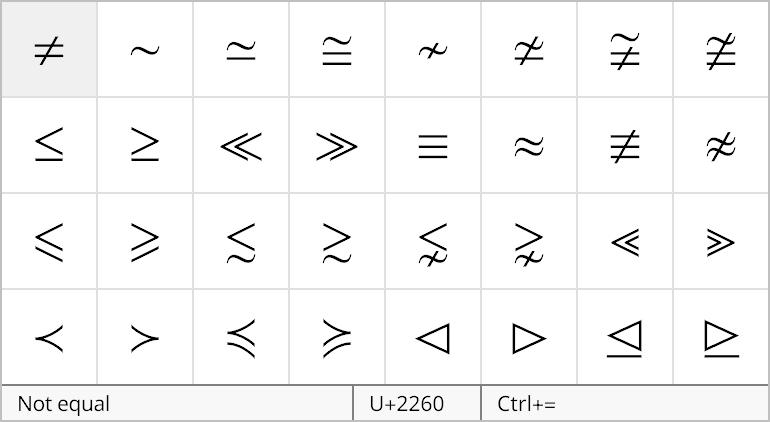
This palette contains symbols, binary operators, and relations used with sets.
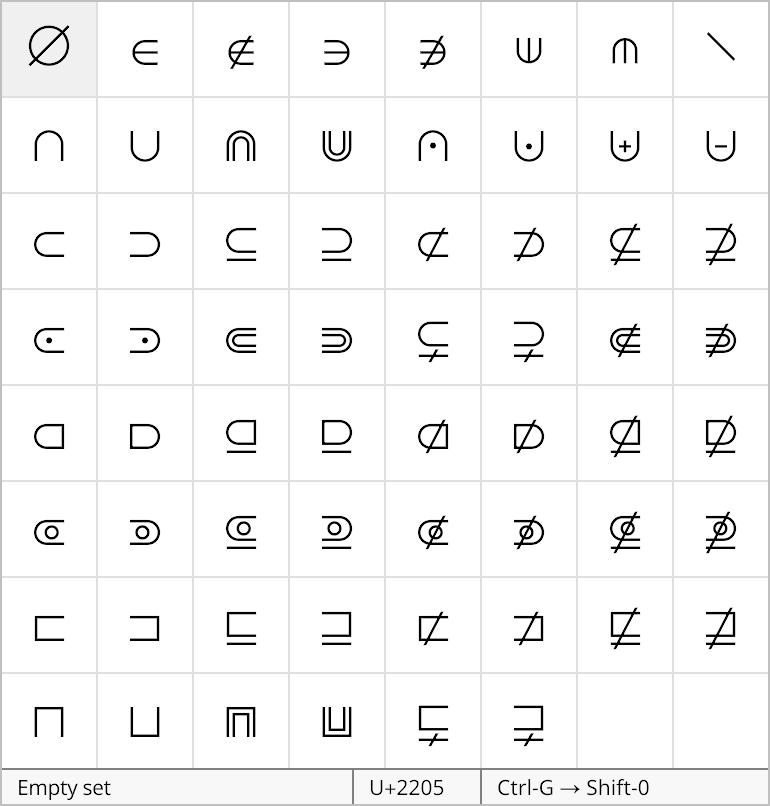
This palette contains a variety of arrow symbols corresponding to Unicode characters. Larger stretchable arrows with optional labels are found in the Big Arrows palette below.
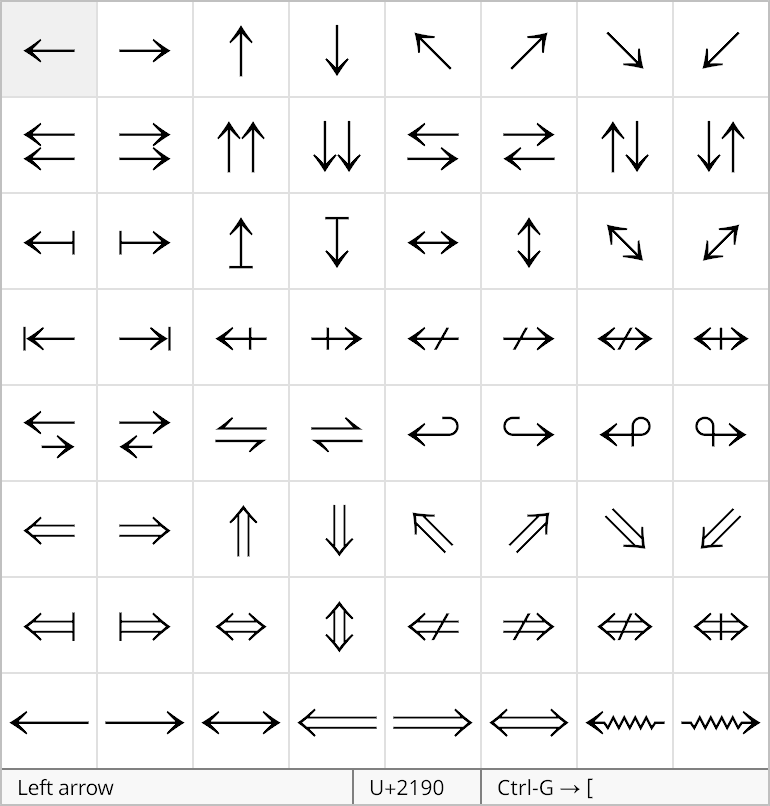
This palette contains a variety of spaces and ellipsis symbols. It also contains the three types of aligners that can be used to align parts of a multi-line expression. Spaces of arbitrary size can be added to an equation by using the Insert Space command.

This palette contains various accents, marks, negations, slashes, and enclosures that can be applied to a single symbol. For stretchable marks that can be applied to larger expressions, use the Wide Marks palette below.
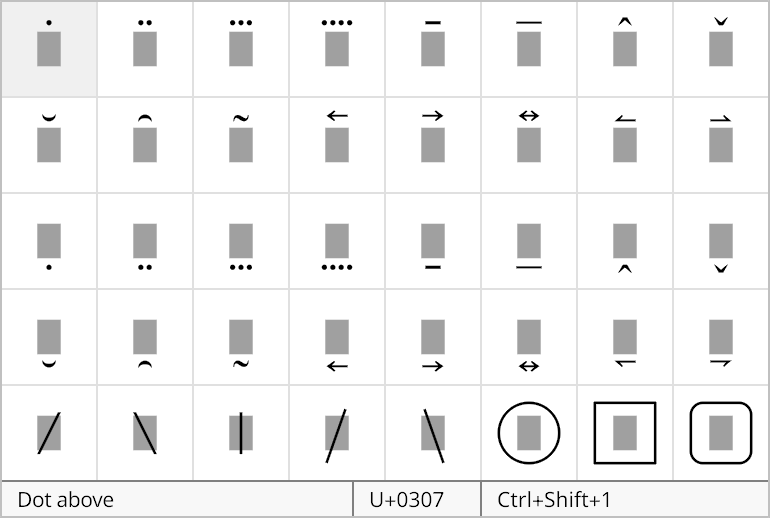
This palette contains all of the common types of parentheses, brackets, and braces that grow with the size of the expression they contain. These structures should be used instead of directly typing opening and closing delimiters in most cases.
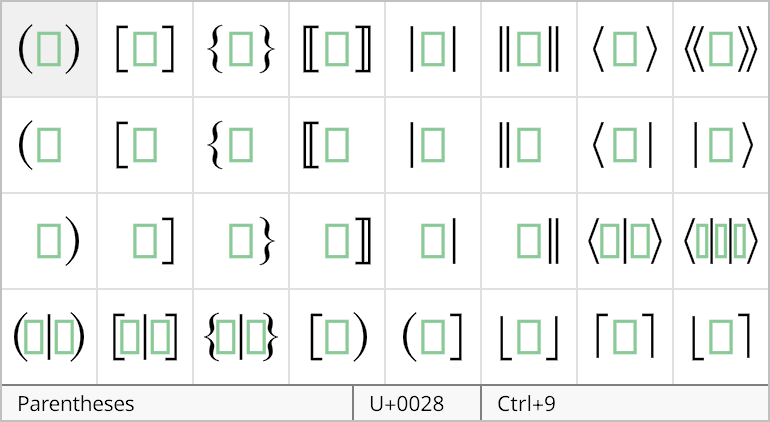
This palette contains many different basic structures commonly found in mathematical expressions, including subscripts, exponents, fractions, radicals, and limits.
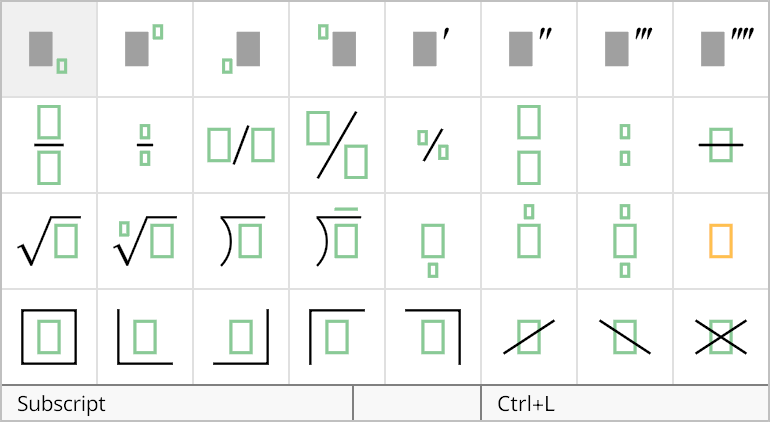
This palette contains summations, products, and other types of iterations over a range of values or a set.
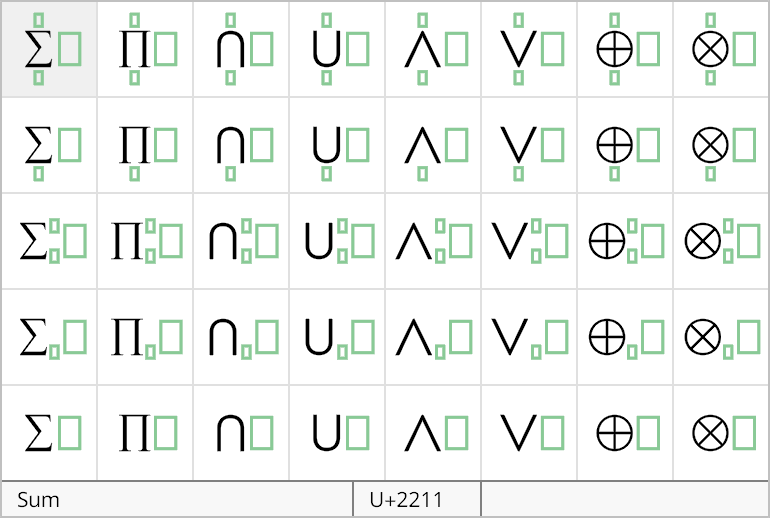
This palette contains various types of integrals.
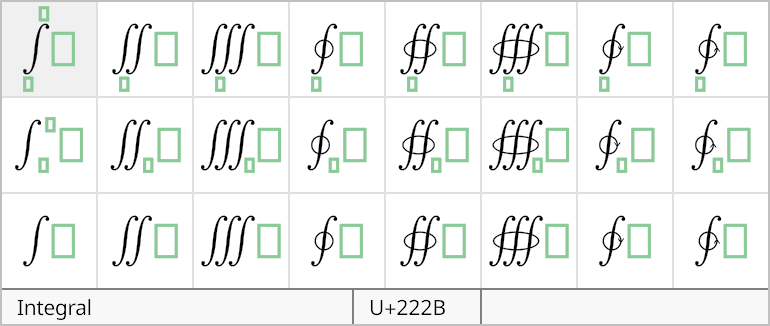
This palette contains stretchable wide marks that can appear above or below arbitrary expressions. Small accents or marks that only appear above or below a single letter should use the Marks palette above.
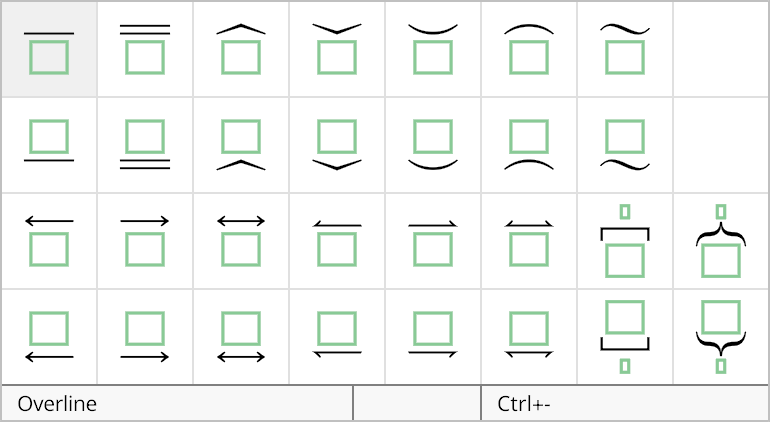
This palette contains stretchable arrows that can have labels above or below and a large variety of “charms” attached to them. See the Insert Arrow command for details.
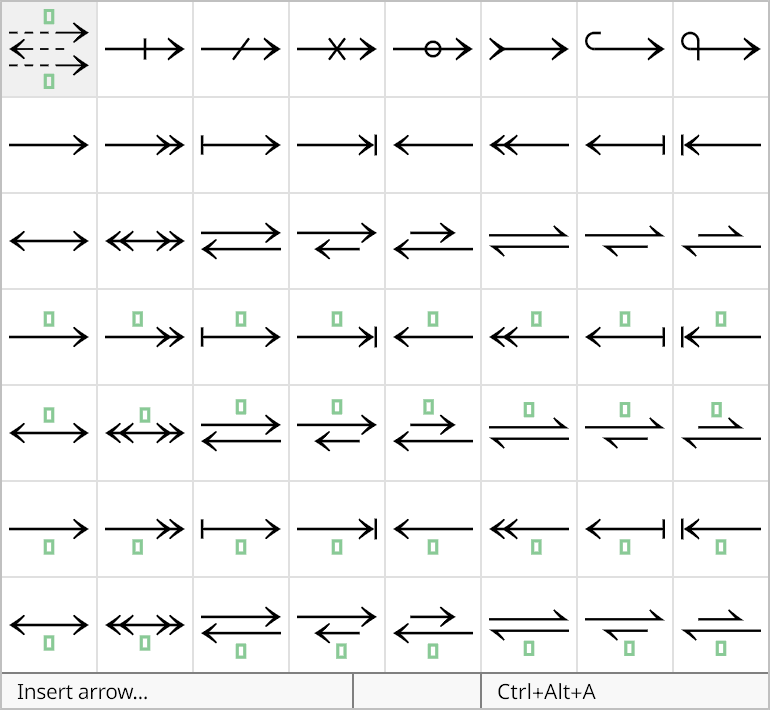
This palette contains matrices ranging in size from 2×1 and 1×2 up to 4×4. To add larger matrices to an equation and configure their properties, use the Insert Matrix command.
